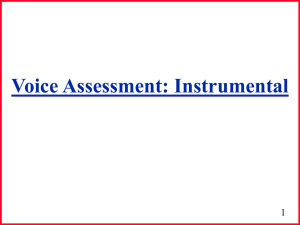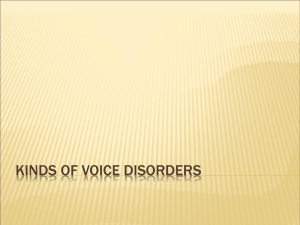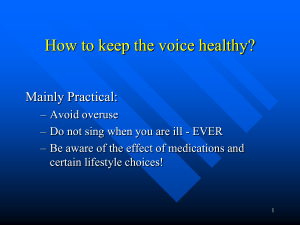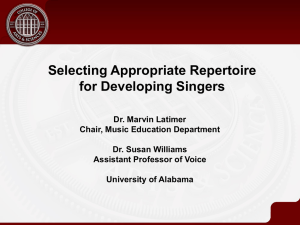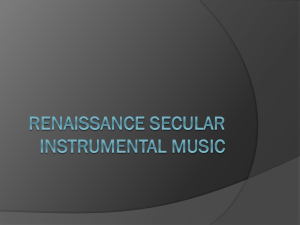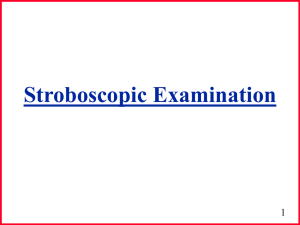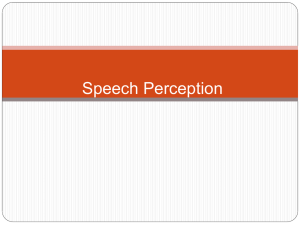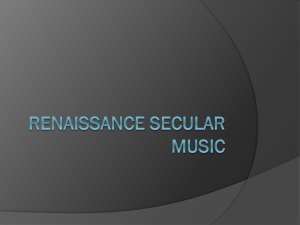Lab 7
advertisement
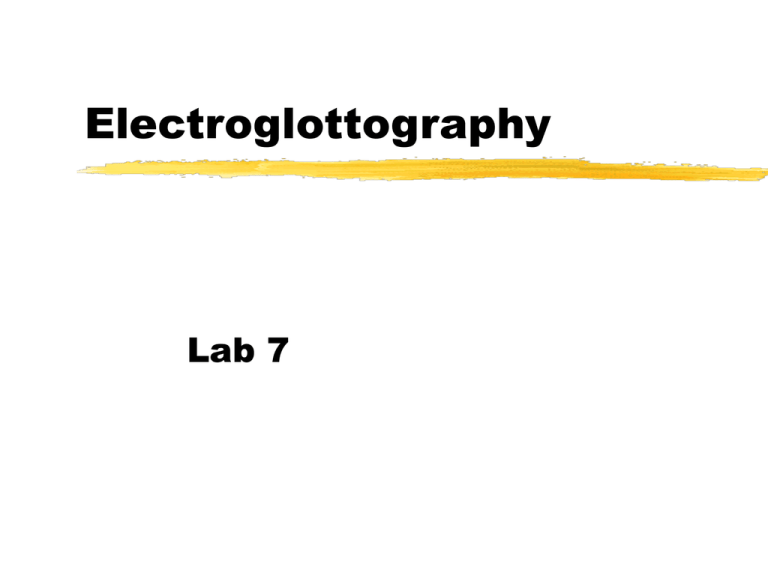
Electroglottography Lab 7 Electroglottography (EGG) Transduce impedance changes in the area between the electrodes Signal not effected by the vowels being produced Transduces the VOCAL FOLD CONTACT AREA ONLY information about when the vocal folds are in contact- nothing about the open phase (or glottal width) Electroglottography (EGG) Demonstrates vocal fold contact area Useful in understanding aspects of vocal fold vibration- Asses Lx function Noninvasive, inexpensive, No information concerning area of glottal opening, Small electrodes on neck; glottis opens= impedance rises, glottis closes= impedance falls EGG Electrodes Glottis Electroglottograph electronics Vocal fold contact area Lines between electrodes represent the electrical current traversing through the v.f.’s EGG Signal (inverse filtered) 1000 Airflow 68 MSEC EGG Closing (upward trace); Opening (downward trace) v.f.’s touch (close) = greater current Width of area of glottis (% of Maximum) Closed Point of max Closing Glottogram Open Open Closing Opening 1 Cycle (T) EGG Contact As vocal folds open & close during vibration, the signal’s intensity changes Air = bad conductor (shows v.f. abduction) Tissue= good conductor (little impedance) The electrodes sense resistance. Does not measure glottal area but the amount of tissue in contact with other tissue. EGG Contact Area Ventilatory position Open Phase Closed Phase Different degrees of vocal fold contact during closed phase Interpretation of EGG Waveforms Graph represents vocal contact area Graph Interpretation A flat Segment 1 represents minimal contact of the vocal folds. It shows the period during which the vocal folds are separated, it is during this phase that peak glottal flow occurs During Segment 2 interelctrode impedance falls rapidly, marking the growing contact of the vocal folds Segment 3 is the period of maximal vocal fold contact. Vocal fold contact is lost during Segment 4 until a minimum is again reached, ending the glottal cycle Laboratory Part I: EGG Setup & Electrode Placement: Place electrodes on thyroid lamina: Label printout “Thyroid” Sustain /i / Place electrodes just below hyoid: Label printout “Subhyoid” Sustain /i / Place electrodes on the cricoid : Label printout “Cricoid” Sustain /i / Summarize effects of electrode placement Laboratory Part II: The Lx wave Place electrodes on thyroid Adjust gain on CSL (Channel 2) Sustain /a/and printout records: **can capture 2 waveforms on each printout from view A & B • Comfortable pitch & loudness • Somewhat lower pitch & same loudness • Somewhat higher pitch & same loudness • Comfortable pitch and softer than comfortable loudness • Comfortable pitch and greater than comfortable loudness Laboratory Part II: The Lx wave (cont.) Fill in table with F0’s from the sample # of cycles/total time x 1000= F0 (Hz) if it looks like 1/2 a cycle count as such (3.5, 5.5 etc.) Fill in the table with open % and contact % Compare different pitch and loudness levels(amplitude, frequency of waveform and vocal contact time) Laboratory Part III: Lx and Vocal Register Use Figure A: Modal register Pulse Falsetto Calculate F0 of each Characteristics of each register Laboratory Part IV: Lx and vocal disorder Use Figure B: Mark any strange characteristics of this waveform What can you say about this waveform in comparison to normal voices?

